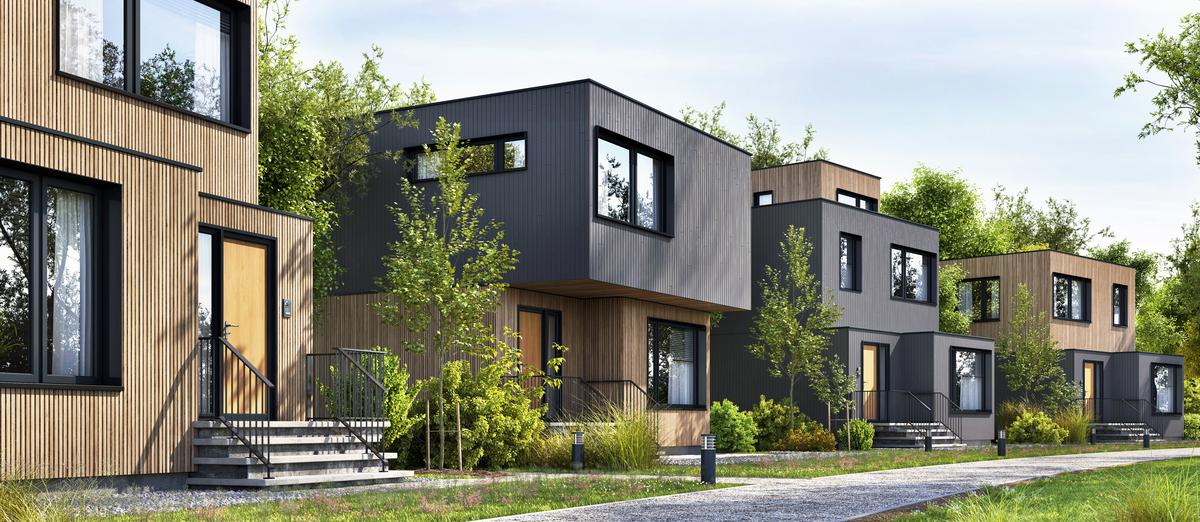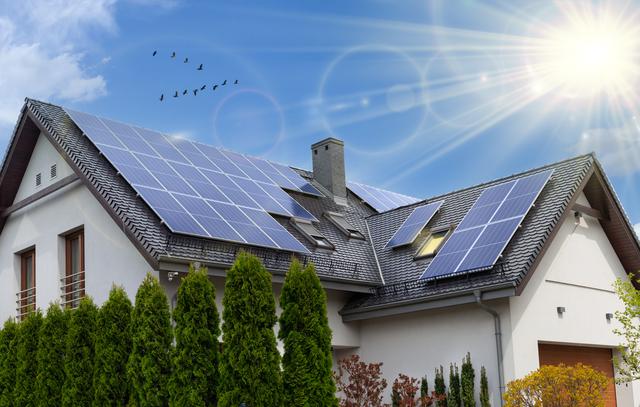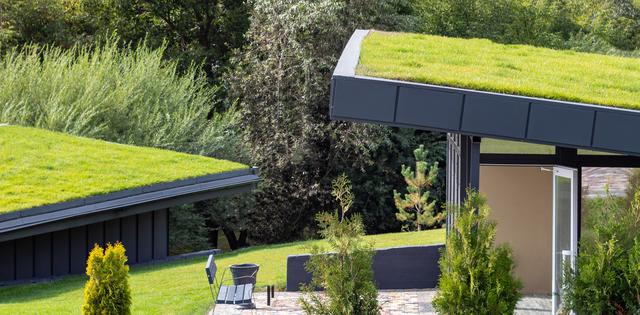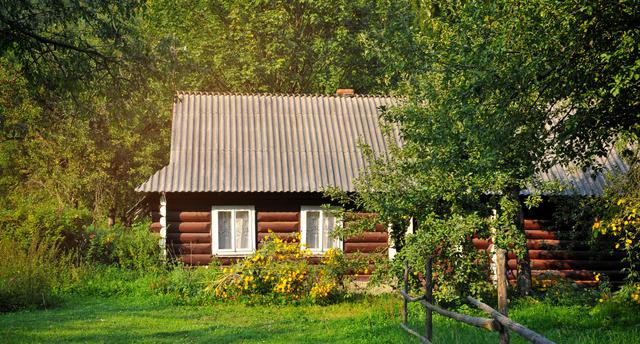Tradition indicates that making use of wood, concrete, and earth bricks for construction is the norm. We have been extensively using these materials to build houses, even to this day. This exploitation has proven to be destructive for the environment, due to mining resources and cutting down trees. Luckily, the shift towards more sustainable construction materials has turned into an ever-growing global trend, one that is being fueled by increasing demand as well as environmental regulations. With green building growing in popularity, an increasing number of communities are pushing for more innovative and renewable materials such as Timbercrete, reclaimed steel, and more.

The Sustainability of Bamboo Makes it Ideal for Green Architecture
One of the most environmentally-friendly building materials is bamboo. Its self-regeneration rate is incredibly high and has been known to grow over three feet in just one day. Bamboo plants continue to spread and grow after being harvested — and without the need to be replanted. It is a perennial plant that’s naturally found on most continents. Its high strength-to-weight ratio and longevity make it an ideal option for anything from cabinets to flooring. It is also comprehensively stronger than brick and concrete. One common reservation around bamboo is that it requires treatment to repel insects as well as to prevent rotting and water damage.
Rammed Earth
Rammed earth has been a common technique in construction throughout millennia of civilization. One famous structure that is built using this method is the Great Wall of China. It is a common and inexpensive solution to constructing durable walls, floors, and foundations by compacting natural materials like earth, chalk, lime, or gravel.
Pressing the materials tightly in wooden forms results in walls that resemble concrete. Buildings constructed using rammed earth are usually fortified with rebar or bamboo. Walls and floors that are made with this technique are also known to carry thermal properties; they absorb warmth from the sun during the day and emit that heat at night.
Precast Concrete Slabs
Another eco-friendly choice for building structures involves casting concrete slabs at a manufacturer’s site and shipping them off to construction areas in whole sections. In many cases, the slabs are composed entirely of concrete but consist of tunnel-like openings that run through the length of the sections. Precast concrete slabs are ideal for walls and facades due to their resistance to a wide range of weather conditions.
The material is great at controlling heat inside a building and is a relatively inexpensive option. It is also more sustainable than conventional choices involving concrete since it needs less energy to manufacture. Precasting the material also allows it to cure in a controlled atmosphere, instead of prematurely exposing it to the outdoor weather conditions of a construction site. This helps to prevent cracks and structural issues within the material.
Straw Bale

Using Straw Bales Is an Eco-Friendly Alternative for Insulation
An ideal choice for framework, straw bales are green building materials that are known for their insulation and soundproofing properties. Straw can also be used as a filler in between columns as well as in beams. It is also fire resistant as it prevents the flow of air. Moreover, harvesting and replanting this material is rather easy and has minimal impact on the environment. Even the process of turning straw into bales is eco-friendly. Placing the material in walls, attics, and ceilings helps in cooling the house during summer, and warm it up during winter.
Mycelium
A sustainable construction material that takes the meaning of ‘natural’ to a whole new level is mycelium. Being a type of fungus, this unicellular organism contains a root structure similar to that of mushrooms. Mycelium can be grown around a composite of materials like ground-up straw. Strong and lightweight bricks or other forms are then created by air-drying the fungus and combining it with pasteurized sawdust. The fungus-based construction material has the ability to withstand severe temperatures and is, therefore, an organic alternative to home insulation — one that you can actually compost.
Hempcrete
As the name suggests, hempcrete is an eco-friendly building material that looks a lot like concrete. It is made from the inner fibers of the fast-growing hemp plant. Binding the woody fibers with limestone forms strong, lightweight, and concrete-like blocks. The lightweight of the hempcrete blocks considerably reduces the energy it takes to transport them to construction sites. The renewable material is also sturdy, fire-resistant, and is ideal for thermal and acoustic insulation. The most important quality that makes hempcrete an eco-architecture material is being CO₂-negative. This means it absorbs more carbon dioxide than it releases.
Terrazzo

Terrazzo Floors Are Both Stylish and Sustainable
Ideal for eco-friendly houses, terrazzo flooring is created by setting small pieces of marble or granite in epoxy resin or polished concrete, giving it a mosaic-style look. This kind of flooring usually has a bigger price tag than carpeting, but you will eventually need to replace the carpet. A well-maintained terrazzo floor, on the other hand, can last up to four decades while maintaining its luster. Moreover, you have the option to choose the color of the floor before pouring it into place. It is also easy to clean, making it a great choice for rooms with high foot traffic.
Timbercrete
This alternative building material is composed by mixing concrete with sawdust. The end result is a product that’s lighter than concrete, reducing the emissions during transportation. Besides reusing a waste product, sawdust also replaces elements of traditional concrete that are actually energy-intensive. Timber concrete is available in conventional forms such as pavers, bricks, and blocks.
Reclaimed Wood
The use of reclaimed wood in construction is an environmentally conscious choice that saves trees and limits the amount of lumber that ends up in landfills. You can find this green architecture material in many places including salvage yards, retired barns, excavation companies, as well as home modeling contractors. It is a great choice for framework, flooring, and cabinetry. While reclaimed wood is lightweight, it may not be the strongest material; it is important to assess the integrity of each piece before choosing it for a project. Since wood is naturally prone to degradation, it is also crucial that you give it the additional treatment and reinforcement that it needs.
Ferrock
Developed only a few years ago, ferrock is composed of recycled materials like steel dust or leftover ferrous rock. The resulting product is an eco-friendly material that resembles concrete but is considerably stronger. Also, the process of drying and hardening ferrock allows it to trap and absorb carbon dioxide. This results in a carbon-neutral product that is less CO₂-intensive than regular concrete.
Just like cement, ferrock can be mixed and poured to build structures such as stairways, pathways, and driveways, making it an ideal alternative. This sustainable material is also believed to be more weather-resistant than its traditional counterpart.
Recycled or Reclaimed Steel

Reusing Steel Is a Smart Choice for Eco-Friendly Architecture
Steel is known to be an ideal material for the framework as it makes the structure more durable than wood against earthquakes and strong winds. While building a house of 1000 square feet requires nearly 25 trees, one built from recycled or reclaimed steel requires the equivalent of only three scrapped cars or one bus.
This eco-friendly material is completely recyclable, limiting the environmental impact of new construction. A great deal of energy goes into mining, heating, and forming structures made from steel or aluminum. Recycling or reclaiming the material, however, reduces the amount of energy consumed. This not only makes it more sustainable but also more durable.
Recycled Plastic
The use of recycled plastic in construction is becoming preferable to new material that’s sourced, mined, and milled for construction. Besides reducing greenhouse gas emissions, this provides plastic waste a new purpose rather than ending up in landfills and adding to the pollution.
A mix of new and recycled plastic can also be used in the production of polymeric timber, which is then used to build fences and other outdoor structures while saving trees. Reused plastic can also be useful in the production of sustainable roofing in addition to floors and PVC windows.
Cork

The Advantages of Using Cork As a Housing Material
The harvest of cork from a living tree makes it a sustainable material. Essentially, the tree keeps on growing and producing even more cork (which is basically the tree’s bark). The material is known to be durable as well as flexible, reverting to its original form even after sustaining a good deal of pressure. This makes it a popular choice for flooring.
Cork is also a great option for insulation due to its noise-absorbing properties. In addition, it is shock-resistant, making it ideal for subflooring. The advantages don’t end there; cork is known to be an excellent thermal insulator. Moreover, the material is fire resistant and doesn’t emit toxic fumes. Since it is almost impermeable, cork is also waterproof and doesn’t rot.
One downside of this environmentally sustainable material is that it only comes from the Mediterranean, making it a bit expensive to ship. Its lightness, however, significantly limits the amount of energy required for shipping.





comments